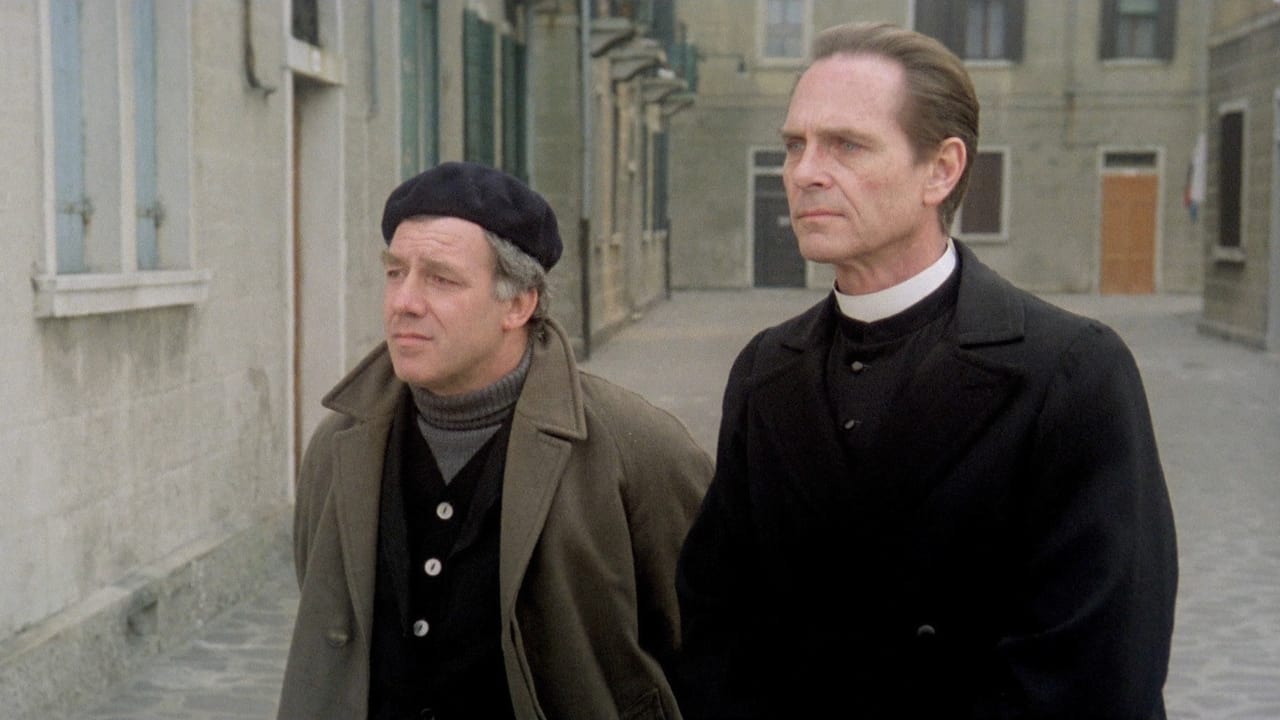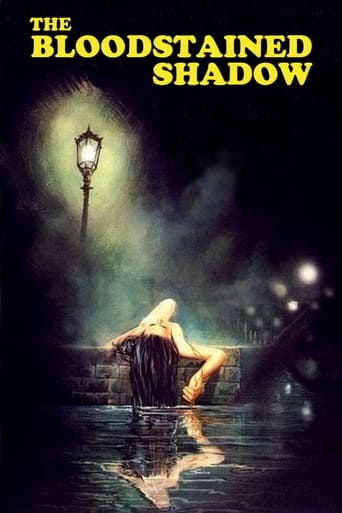

After seeing the high-fashion styling of the Giallo Nothing Underneath on Video yesterday,I got in the mood to play one of the Gialli DVDs that has been waiting for a viewing. Reading about the title for a number of years,I decided it was time to clean the blood from the shadow.View on the film:Caught off-guard by the producer demanding he makes a second Giallo straight away, co-writer/ (with Domenico Malan and Marisa Andalò) director Antonio Bido decision to turn an unpublished short story from a friend of his wife into a script gives the mystery a novel-like spine,via the film being divided between clues to the killer,and a rustic slice of life, showcasing the daily rituals between Don Paolo and his flock. Whilst sadly dipping into some of the worst stereotype of the genre, (they can't just be a killer,they have to be gay and a child abuser as well!) and going for a low body count, the writers build up the terror by going for a sub-section of Giallo based in the rural wilderness, where the viciousness of block glove murders is matched by an extremely cynical take on religion, and a dissection at the suspicions that the locals view all outsiders with.Limiting the number of set-pieces, Bido & cinematographer Mario Vulpiani makes each of them count by expanding on the brittle mood of the script,the stylishly first-person tracking shots are lit by grisly deaths from someone getting shoved face first into a fire,to a final tribute towards Don't Torture a Duckling. Cleverly using Murano to stand in for Venice,and having Stelvio Cipriani and Goblin both work on the great brooding score, Bido and Vulpiani give their Giallo a harsh Film Noir appearance,in thick lines of bloodstained shadows and rooms covered in decaying green creating a Jack the Ripper era vibe, along with Bido keeping the tracking shots narrow to subtly express the closed-off,isolated state of the town.Whilst most kept from getting fully involved in the mystery, sexy Stefania Casini gives a very good performance as Sellani,who Casini uses to offer the lone glimpse of warmth in the murky Giallo waters. Unable to rub a fractured memory away,Lino Capolicchio gives a terrific performance as D'Archangelo, thanks to Capolicchio capturing D'Archangelo awkwardness as an outsider around the locals and his god-fearing brother Paolo, (played by an excellent Craig Hill) which simmers into a mature feeling of doubt over how the town is run,as D'Archangelo steps into the bloodstained shadow.
... View MoreA professor, Stefano(Lino Capolicchio), returns home to visit his brother Don Paolo(Craig Hill), a parish priest, and finds that someone is bumping off specific citizens in gruesome ways. We get a séance reading with the spiritualist after earlier seeing her receiving bribe money in an envelope in the café where the brothers feast and chat about old times. The spiritualist is strangled by someone in black leather gloves and raincoat as a storm rages outside with Paolo hearing her death scream from his room above. He doesn't see the person responsible only later receiving threatening fragmented riddled letters informing him to remain silent or else. Stefano will pursue the identity of the killer, out of devotion to his brother. Stefano meets an art decorator, Sandra(Stefania Casini), on his train to home, with a blossoming relationship resulting as the murders to several who partook in the very séance held by the spiritualist before she was killed, continue to increase. Sandra's ill mother, once a very talented artist, has a specific painting which might yield a clue to the overall mystery that opens the film in slow motion..an innocent girl was strangled by someone(..the killer, of course, off camera)and as she falls to the ground, ripping pages from a book tossed away. Also, the way the letter "t" is printed on the threatening letters to Paolo, an image that haunts Stefano, an abortionist with a mentally ill son, and the aforementioned painting someone is very interested in requiring all play a hand in who is committing the murders. Those who sought after by the killer include a wealthy aristocratic homosexual Count who likes to fondle boys, an atheist doctor often clashing with the priest, Sandra's own artist mother, and quite possibly the abortionist and Paolo himself.Stylish giallo from director Antonio Bido perhaps is a bit slow in places, but is convoluted enough with a pretty good cast and sordid characters which should satisfy the giallo thriller crowd. I thought Craig Hill as the troubled priest was very good, quite expressive as his face displays tormenting thoughts and paranoia. This giallo does have a sex scene between Stefano and Sandra which should also satisfy the ones expecting it in their gialli. Not as violent as other thrillers of it's ilk, and the film takes it's time telling the story. Very story-driven with the mystery unveiling bit by bit. Those who are familiar with this genre might find a twist(..used in films such as "Don't Torture a Duckling" & "Seven Blood-Stained Orchids")rather derivative, but I think this giallo works well enough. Some beautiful, effective uses of the island the director shot the film representing his own form of Vienna. My favorite set-piece would be the following point-of-view shot as someone is walking behind Sandra through alleys of Vienna and across corners as she makes her way to home.
... View MoreStefano (Lino Capolicchio) goes to Venice to visit his brother--priest Don Paolo (Craig Hill). While there certain people are being murdered for no rhyme or reason. Also Don Paolo is getting letters threatening his life.Plot wise there's nothing new here. You've seen these characters (and situations) in giallos of the past. Also Capolicchio and Stefania Casini (playing his blank girlfriend Sandra) are pretty terrible actors. We're supposed to identify with them but they don't come across at all. And, of course, there's the obligatory pointless sex scene and a long trip through the canals that leads to nothing. Still this works. The cinematography here is just great--virtually every shot here takes your breath away. Hill is very good as Don Paolo--more of him could only have helped the movie. There's also a great score by the group Goblin--almost as good as the one for "Suspiria". The ending is effective too. So--it's no great shakes but you could do worse. See a wide screen print. I give it a 7.
... View MoreSet in and around Venice and heavily mired in the world of Catholicism, The Bloodstained Shadow is a dreary and unfulfilling giallo that brings nothing new to the genre. Director Antonio Bido allows the plot to unravel extremely slowly and often seems more intent on showing us the sights of Venice rather than telling a taut murder mystery tale.The story revolves around a group of unsavoury characters who are being bumped off one-by-one (in a relatively bloodless fashion) by a lunatic who may be connected to a murder that took place many years before. In between the lacklustre death scenes and the travelogue-style footage of Venice, we get an uninteresting love story (with a gratuitous sex scene) and loads of talking. Even the score, performed by Italian rock group Goblin, failed to impress me.By the time the identity of the murderer was revealed (and eagle eyed viewers will probably have guessed already), I was struggling to stay awake. The Bloodstained Shadow is one for giallo completists only.
... View More